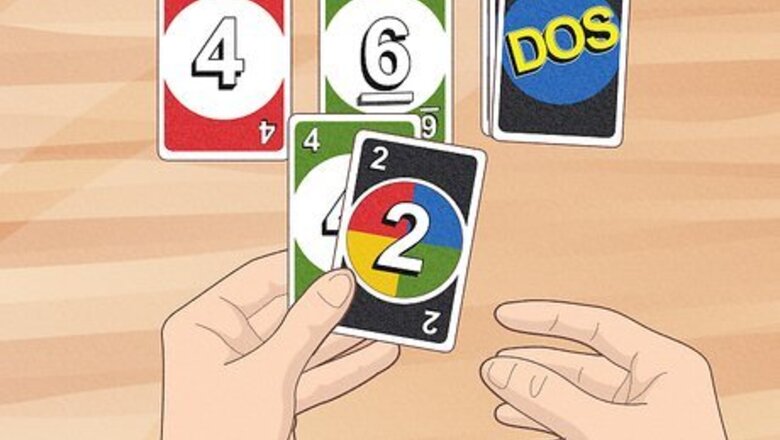
views
- Play DOS with 2–4 players that are 7 or older. Deal 7 cards to each player and 2 to a Center Row in the middle of the table.
- Play 1 or 2 cards with matching numbers to any cards in the Center Row on your turn. The cards don’t have to be the same color.
- Be the first person to play all the cards from your hand. Say “DOS!” when you have 2 cards left. Earn points for cards that the other players still have.
- Win the game if you’re the first player to earn 200 points.
Objective
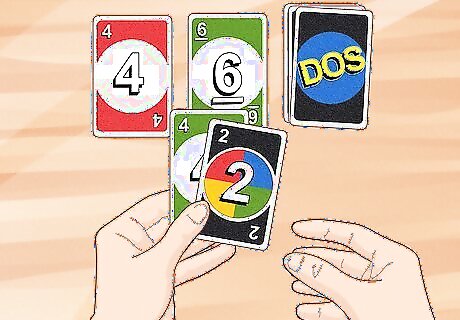
Be the first player to play all the cards in your hand in a round. Each turn, you’ll play cards from your hand to matching numbers face-up on the table. If you’re able to play all of the cards in your hand, then you earn points for any cards the other players have left in their hands. The first player to reach 200 points wins the game. You can play DOS with up to 4 friends or family members who are 7 or older.
Cards & Components
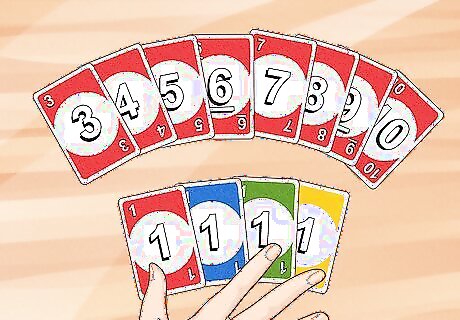
Number cards There are 22 number cards in each of the 4 colors: blue, green, red, and yellow. The number cards are valued 1, 3, 4, 5, 6, 7, 8, 9, or 10.
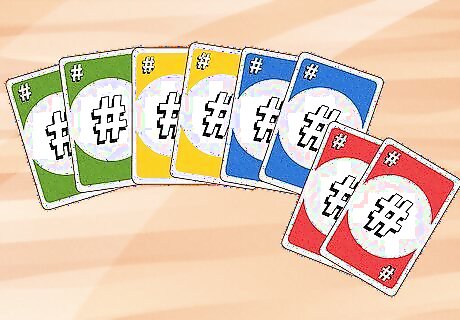
Wild # cards There are 2 Wild # cards of each color. You can use Wild # cards as any value from 1–10. As soon as you play a Wild # card, you immediately choose its value.
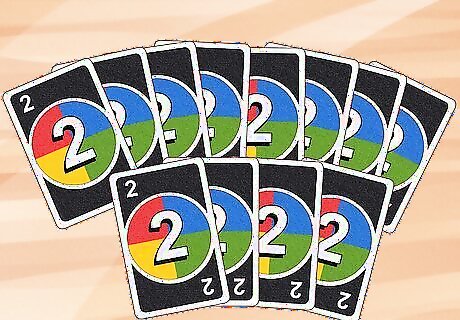
Wild DOS cards There are 12 Wild DOS cards with a value of 2, but you can use them as any color. You get to decide what color a Wild DOS card counts as once you play it. Even though you don’t need to match colors when you play cards, you get to play a bonus card from your hand if you do.
Setup
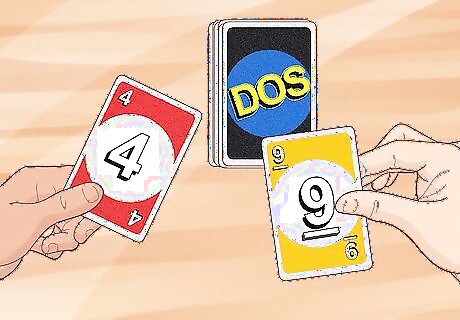
Draw cards to figure out who starts as the dealer. Take turns randomly picking a card from the deck. Whoever has the card with the highest number starts the game as the dealer. If you draw a Wild # card, it counts as 0.
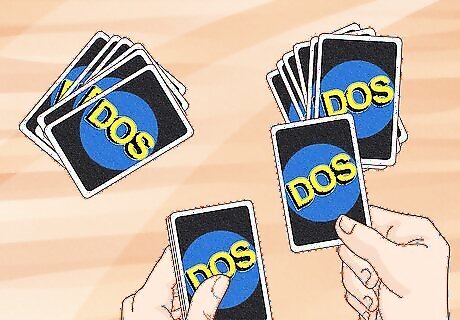
Shuffle and deal 7 cards to each player. Shuffle the cards really well so they’re mixed up. Deal the cards out 1 at a time until everyone at the table has 7 cards. Set the leftover cards facedown in the middle of the table to make the draw deck. You can look at the cards in your hand, but keep them secret from everyone else.

Put 2 cards face-up on the table to make the Center Row. Flip the top 2 cards from the deck over and set them face-up next to the stack. On your turn, you’ll play cards from your hand onto the ones in the Center Row if you’re able to. Leave space next to the deck of cards where you can eventually put a discard pile.
Taking Your Turn
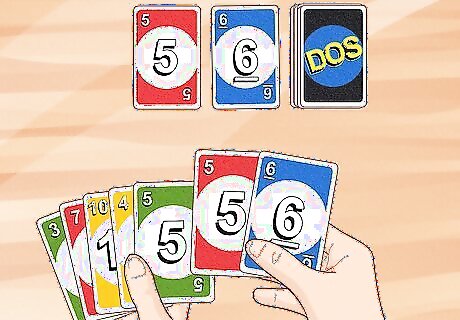
Match cards to the Center Row if you can. The player to the left of the dealer takes the first turn. When it’s your turn, you can play cards from your hand that match any of the cards in the Center Row.
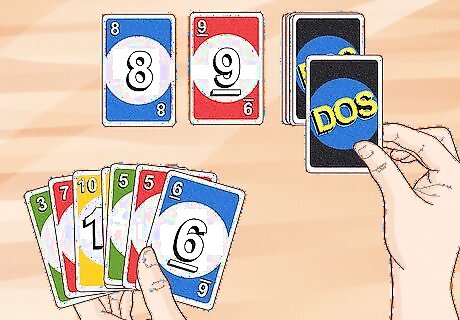
Draw a card if you can’t play any cards from your hand. If none of the cards match or add up to one on the Center Row, take the top card from the deck and add it to your hand. If you can use the new card to make a match, you can immediately play it from your hand. If you still can’t play a card from your hand after drawing, take 1 card from your hand and put it face-up next to the other cards in the Center Row.
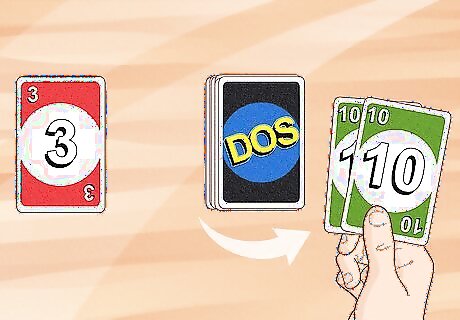
Discard any stacks in the Center Row you played cards to. You only need to discard stacks if you played cards from your hand during your turn. Take all of the cards you played (as well as the Center Row cards) and move them to the discard pile. Flip cards from the top of the draw deck until there are 2 cards in the Center Row again. There’s no limit to how many cards you can have in the Center Row as long as there are at least 2.
Matching Cards
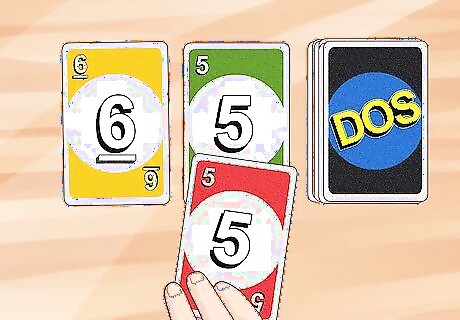
Single Match Play 1 card from your hand to a card in the Center Row with the same number. The cards don’t have to be the same color, but you can get a Color Match Bonus if they are. Example: If you have a 5 in your hand and there’s a 5 in the Center Row, you can play your card on top of it. If the card in the Center Row is a Wild # card, you get to choose what number it is before playing cards from your hand.
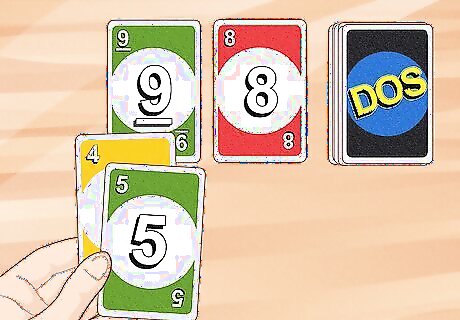
Double Match Play any 2 cards that add up to the number on one of the cards in the Center Row. The colors don’t need to match. Example: If there’s a 7 in the Center Row, you could play a 2 and a 5 from your hand on top of it.
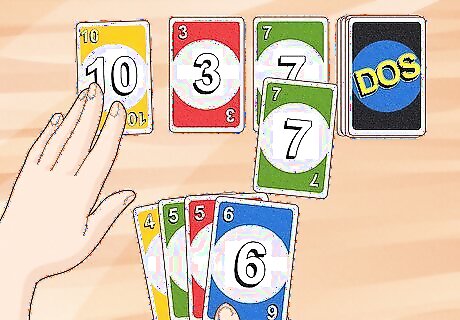
Single Color Match If the card you played matches the number and color of the card in the Center Row, you may add a card from your hand face-up to the Center Row at the end of your turn. If a Wild DOS card is in the Center Row, you get to choose what color it is before playing cards on top of it.
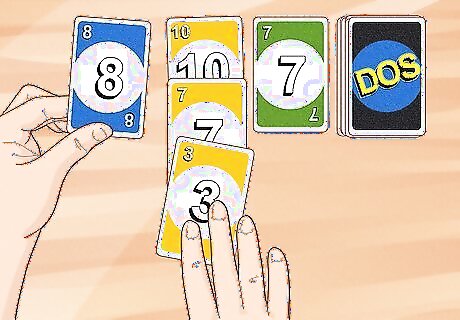
Double Color Match If both of the cards you played add up to the number on a card in the Center Row and if they’re all the same color, you can add 1 card from your hand to the Center Row at the end of your turn. In addition, every other player draws a card to their hand. Example: If the card in the Center Row is a red 5, and you play a red 1 and red 4, you earn a Double Color Match bonus.
Ending the Round
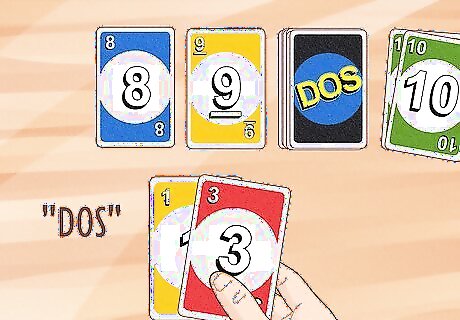
Shout “DOS” if you have 2 cards left in your hand. Say “DOS” loud enough so all the other players hear you. This lets everyone else know that you’re close to going out, which is when you play all the cards from your hand. If you forget to say “DOS” and another player says it before you, then draw 2 cards from the deck at the end of your turn.
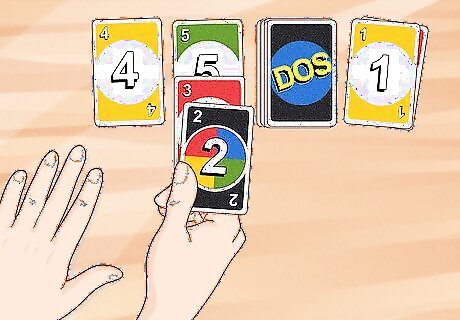
End the round when someone plays all of their cards. Keep taking turns clockwise around the table until someone goes out. The round immediately ends so you can tally up scores. If you go out by making a Double Color Match, make sure all the other players draw 1 card before you start scoring.
Scoring
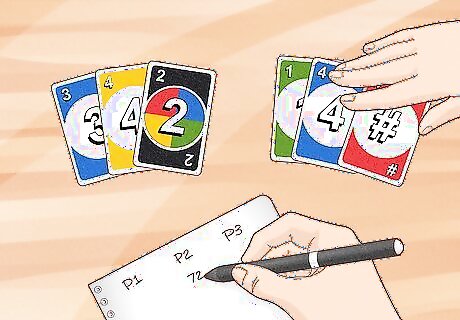
Give the player that went out points for the cards in other players' hands. Any player that still has cards adds up the points they have left over in their hand. Cards with numbers 1 or 3–10 are worth their face value. Cards with “#” count as 20 points and Wild DOS cards are worth 40 points. Total all the points from the cards and add them to the score for the player who went out. Example: One player has a 3, 4, and Wild DOS for a total of 47 points. Another player has a 1, 4, and # for a total of 25 points. The player that went out earns a total of 72 points for the round.
Winning the Game
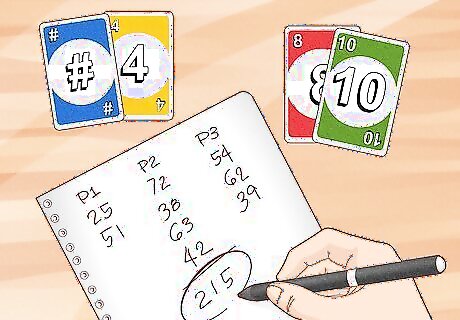
Win if you’re the first player to earn 200 points. Whoever went out in the last round becomes the dealer for the new round. Collect and shuffle all the cards before dealing out new hands to the players. Once a player reaches 200 points or more at the end of a round, they win the game immediately!














Comments
0 comment